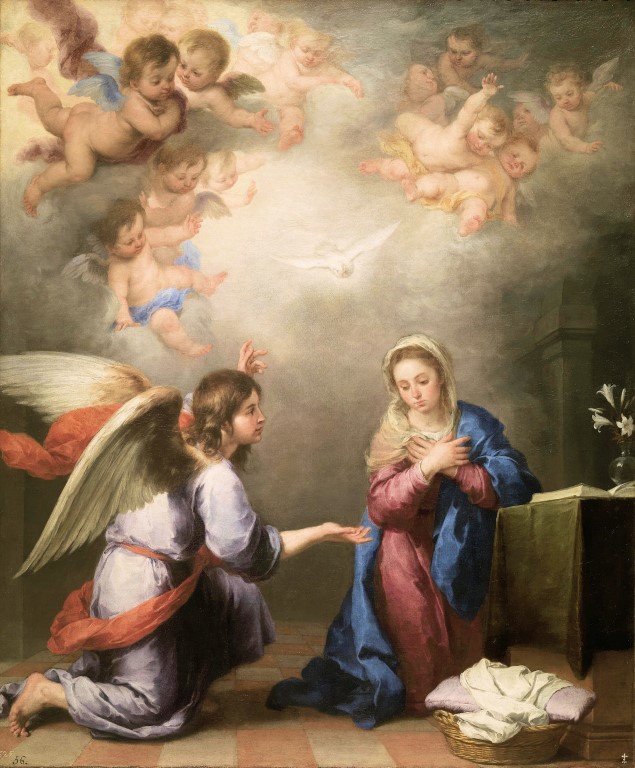
One of the most noticeable differences between the new rite of Mass and the old rite, especially for those who attend the old rite for the first time, is that many of the prayers we are accustomed to hearing aloud, are said silently - particularly the Canon of the Mass. In
The Spirit of the Liturgy (1999), the then Cardinal Ratzinger said:
It really is not true that reciting the whole Eucharistic Prayer our loud and without interruptions is a prerequisite for the paricipation of everyone in this central act of the Mass.
He had suggested, in 1978, that the priest might say the first words of the various prayers out loud so that each person could, in his silent prayer, bring his personal prayer into the communal prayer and the communal prayer into his personal prayer. (He notes that this suggestion annoyed many liturgists.) He went on to say,
Anyone who has experienced a church united in the silent praying of the Canon will know what a really filled silence is. It is at once a loud and penetrating cry to God and a Spirit-filled act of prayer. Here everyone does pray the Canon together, albeit in a bond with the special task of the priestly ministry.
Guéranger in his
On the Holy Mass, reported a historical anecdote related to the silent Canon.
In the seventeenth century the Jansenist heretics tried to introduce the abuse of reciting the Canon of the Mass aloud. Deceived by their tricks, Cardinal de Bissy, one of the successors of Bossuet, countenanced the admission of "R." in red type, into the Missal which he had composed for his Church, as the French Bishops of that day imagined they had a right to do. These "R." in red would naturally convey the idea that the people were supposed to respond the Amen thus marked. Now they can only respond to Prayers that can be heard. Hence would necessarily follow, at last, the recitation of the Canon aloud, by the Priest, which was the very thing aimed at by these Jansenists. But happily, public attention was quickly drawn to this dangerous innovation, loud complaints were raised against it, and Cardinal de Bissy himself withdrew the unfortunate step he had taken.
Guéranger's thought on this matter was not limited to the observance of liturgical law or the avoidance of being associated with something Jansenists desired. (Incidentally, it would be interesting to find out exactly why the Jansenists sought this innovation.) Commenting on the texts of the Mass, after the
Sanctus, he wrote:
After these words, commences the Canon, that mysterious prayer in the midst of which heaven bows down to earth, and God descents unto us. The voice of the Priest is no longer heard: yea even at the Altar, all is silence. It was thus, says the Book of Wisdom, in the quiet of silence, and while the night was in the midst of her course, that the Almighty Word came down from his royal throne (Wisd. xviii. 14, 15). Let us await him in a like silence, and respectfully fix our eyes on what the Priest does in the holy place.
I have before suggested that liturgical reform in the present time would be more effectively accomplished by giving permission for traditional practices than by issuing condemnations of abuses. To be sure, the latter are important: even if they are widely ignored, orthodox priests at least have an authoritative source to appeal to. But if they were given permission to celebrate Mass saying the Canon silently, it would be an opportunity to introduce people in a striking way to the idea of genuine participation as something for which external activity is neither necessary nor sufficient.
 One of the most noticeable differences between the new rite of Mass and the old rite, especially for those who attend the old rite for the first time, is that many of the prayers we are accustomed to hearing aloud, are said silently - particularly the Canon of the Mass. In The Spirit of the Liturgy (1999), the then Cardinal Ratzinger said:
One of the most noticeable differences between the new rite of Mass and the old rite, especially for those who attend the old rite for the first time, is that many of the prayers we are accustomed to hearing aloud, are said silently - particularly the Canon of the Mass. In The Spirit of the Liturgy (1999), the then Cardinal Ratzinger said:
